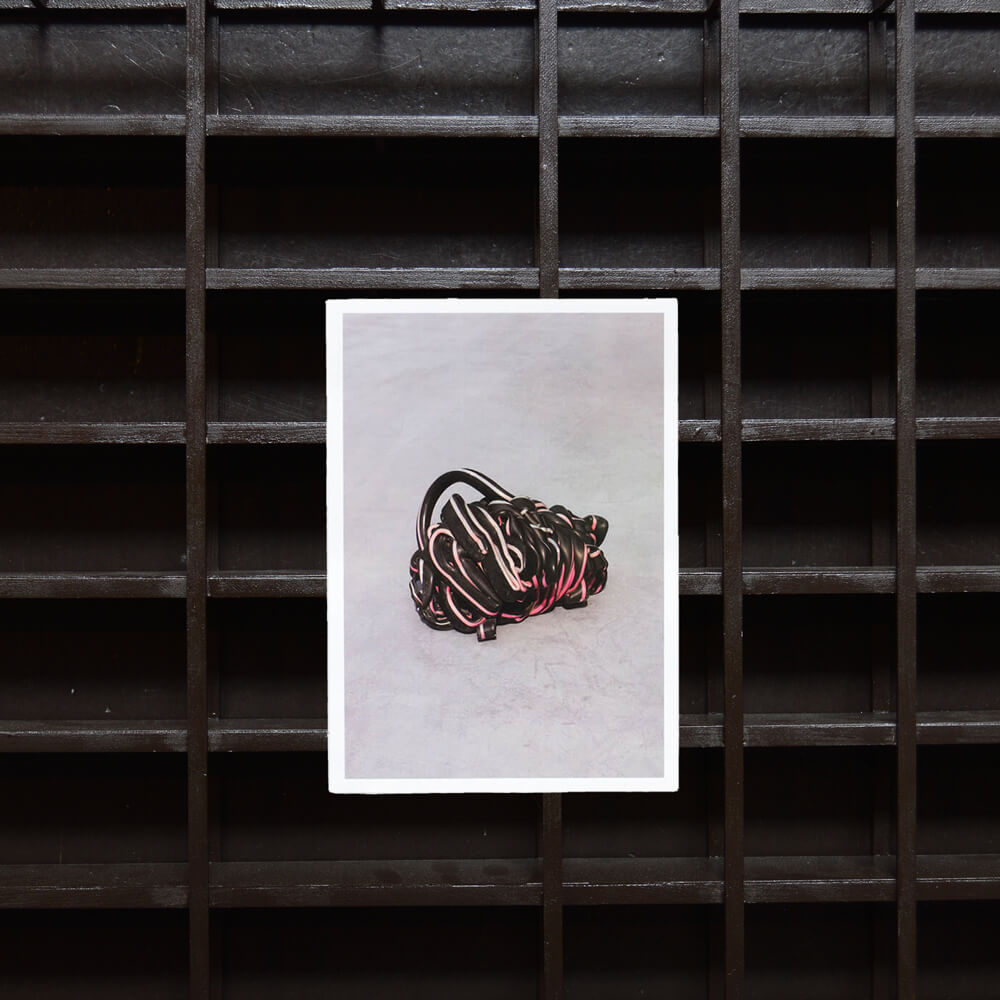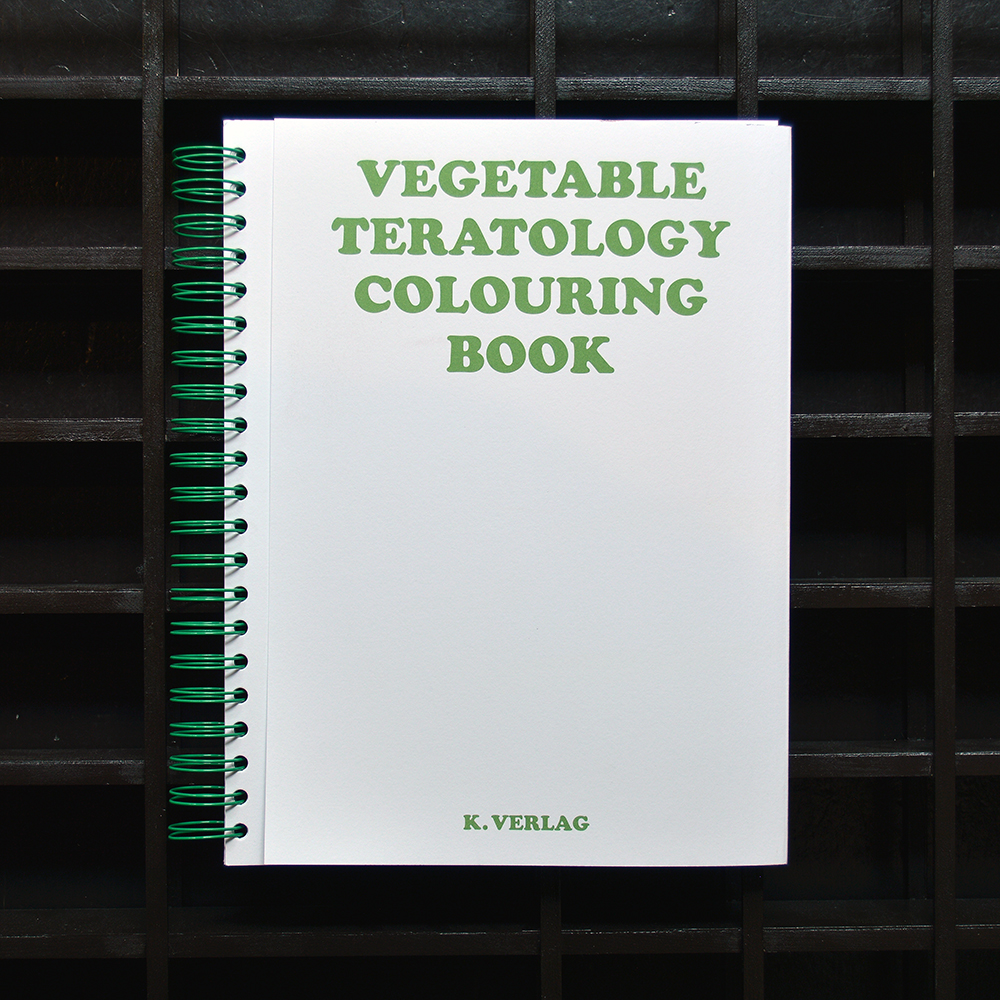** Our bookshop in Berlin-Mitte has closed ** Orders available only via www.bomdiabooks.de **

Let’s say a blank page is not actually blank. In fact, let’s say it is anything but blank. Devoid of colour, yet infinitely colourful; full of possibilities for multicoloured pens and literally covered by multitudinous life forms. It turns out that even the emptiest page is technically more than full – it’s alive. Do microbes respond to colour on paper? Can spontaneous doodles give rise to new species? Based on Antonie van Leeuwenhoek’s term for microorganisms, this age-fluid book considers a world where the smallest is suddenly in control of the largest. Its illustrations function as an exploration into morphological occurrences, rejecting the goal-oriented, the figurative and the categorical. Following a traditional format, these pages attempt to open up a creative bypass. To draw is to embrace mutational forms, and to colour in these pages is to understand that many possible forms may emerge as a bear or a bacterium. We are what we draw. Time then to let those animalcules express the possible colours of kingdoms to come. ↑ ↓ ↓
€19,00
SOLD OUT

For her first solo exhibition in Asia, Canell made research into the production and distribution of fiber optic sheaths in the outskirts of Seoul, where cable mounds are sorted according to colour and eventually remoulded into the synthetic circumferences of future relations. Literally caught in between melting and being repurposed, several hundred meters of gutted sheaths are compressed into dense lumps of immaterial distance. The accompanying book consists of ten short new texts around which fragments of communication with the authors have been punctuated by observational photographs and sculptural documentation. Contextualized by both recent and earlier works, the exhibition and book considers sculpture as a medium of storage, transmission and reception. ↑ ↓ ↓
€20,00

The problem with coloring books is that they seem to be more about filling time rather than a page. It’s as if they suggest that there is no negotiation involved in the processes which give shape to things on paper, or the subjects they depict. Shouldn’t geometry, scale and proportion be as wild on paper as they are in the wild? This small book is not about censorship, nor is it explicitly about the colouring-in of vegetables: the full-page figures from Maxwell Tylden Masters’s Vegetable Teratology: An Account of the Principal Deviations from the Usual Construction of Plants (1869) are not bound to botany. As abstract illustrations they function as an exploration into morphological occurrences, rejecting the goal-oriented, the figurative, and the categorical. Following a traditional format, the Vegetable Teratology Colouring Book (edited by Nina Canell & Robin Watkins) attempts to open up a creative bypass, embracing the multitude of forms that may emerge as a pear or plum. Time then to draw out the possible colors of fruit to come. In the publication, Masters’s botanical illustrations have been contextualised by a glossary, image captions, and a short text by Robin Watkins. ↑ ↓ ↓
€14,00
SOLD OUT